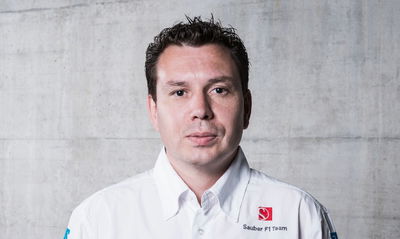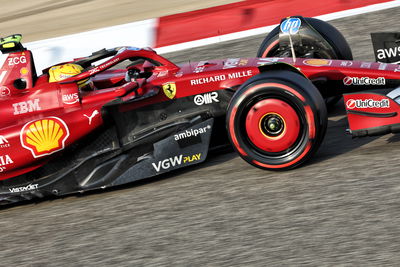Eric Gandelin, Sauber - Q&A

Q:
Eric Gandelin, there are a lot of regulation changes in 2014. Can you explain what has changed and how that affects the design of the Sauber C33-Ferrari, starting with the chassis and the aspect of safety?
Eric Gandelin:
Yes, the regulation changes in 2014 are the biggest ever seen in Formula One. They impact on all aspects of the car's design. The most noticeable change on the chassis and safety side concerns the nose structure where a maximum height for the tip of the nose is now set by the rules. This is to reduce the likelihood of cars launching in the air in case of a front to rear impact. This also reduces the risk of a driver sustaining head injuries, which could happen with the previous higher nose design.
These changes are combined with a new side impact structure as well, for which the design is now regulated. This means the dimension of the tube and the laminate is now set and the same for all teams. These tubes are overall much bigger and result in bulkier side pods, especially compared to the very slim side pods, which we had on the C32.
Q:
What are the most important regulation changes regarding the aerodynamics and how did these influence the design of the Sauber C33-Ferrari?
Eric Gandelin:
On the aerodynamic side we have a lot of changes as well. The width of the front wing has been reduced by 75 millimetres on either side. The rear wings' lower wing has been removed, which led us to review the mounting concept for the wing, leading to the twin pylon mount you can see.
The rear wing's upper wing box has been reduced in height, which means we have less available space to arrange profiles. The maximum opening allowed on the DRS mechanism has been increased by 15 millimetres. Apertures in the central diffusor are now forbidden and the hole through which the car is starte will now have to be closed by a flap.
To finish, the exhaust exit has been relocated at the rear on the car's centre line, with the intention of the rule makers being to prevent teams from using exhaust gases to generate downforce.
Q:
2014 will see a completely new powertrain. Can you explain the changes and how they influenced the design of the Sauber C33-Ferrari?
Eric Gandelin:
On the engine side the old 2.4 litre naturally aspirated V8 is being replaced by a 1.6 litre turbocharged V6 engine. This is coupled to a much more complex energy recovery system with bigger batteries and now two electric motors. Energy is being recovered from both, braking and heat. The power generated by the energy recovery system will increase from 60 kilowatts in the past few years to 120 kilowatts with the boost available for 33 seconds.
The fuel consumption is being reduced significantly. We are now limited to 100 kilograms of fuel from green light to chequered flag. This has resulted in much smaller fuel cells, which impacts the chassis length. On the braking side we have an all-new brake-by-wire system at the rear. This means that the pressure applied to the calliper is electronically controlled, depending on the driver's demand and the energy being recovered from the rear axle.
This new power unit has presented us with big challenges in terms of packaging as well. The size of the radiators has increased significantly and we have a lot more electronic boxes to package within the bodywork as well. In addition, the minimum legal car weight has been increased from 642 kg to 690 kg, which only partially compensates for the addition of all the new systems.
So, weight saving has been one of our priorities in the car's design. Overall, this has presented our team with a huge challenge and we are now looking forward to comparing ourselves to our competition and see where we stand.











